Page 10
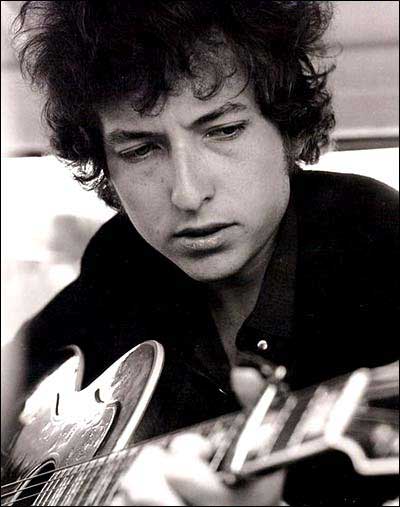
Let's go racing on the Isle of Man!
In Bob Dylan’s song, Political World, he uses the phase “You can go anywhere and hang yourself there, you’ve always got more than enough rope.” A pretty good observation!
And isn’t it Great that the statement is true!
The Isle of Man is unique. It is a semi-autonomous island between Great Britain and Ireland. It is about 40 miles by 15 miles and has a 38 mile race course formed by public roads. It is a Mecca for motorcycle racing and it imposes very few safety rules. It has been that way since 1904 when the first auto race was held there. The 1904 race was held there to get away from bureaucratic rules, namely the British edict that automobiles must not go any faster than 20 mph in all of Britain! A Napier (that name again!) won. In 1907 the first motorcycle Tourist Trophy race was held.
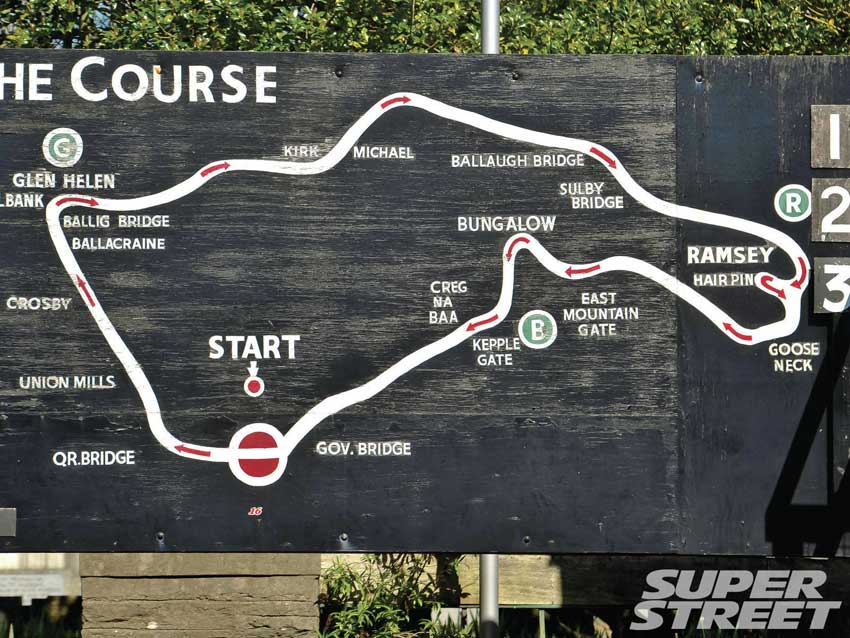
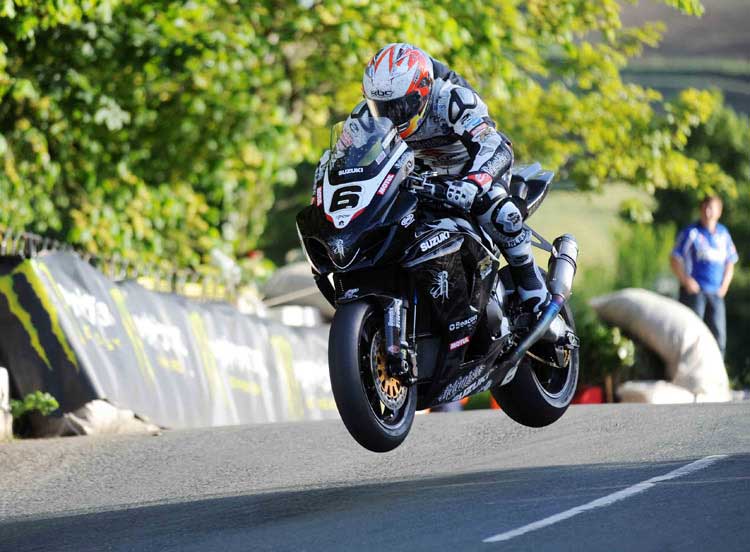
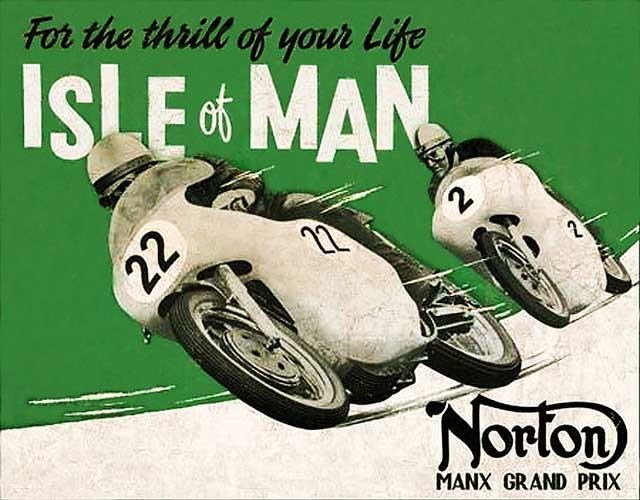
Certain things haven’t changed. And the history of the race impacts each new season with past heroes like Geoff Duke, Joey Dunlop, and Mike Hailwood injecting a spirit of glory that infects any enthusiast who touches the event as a racer or as a viewer, whether they sense the details or not. You can go there and race and kill yourself very simply. The average is around 2 deaths per year and in 1970 there were 8 fatalities. And that is just registered racers. The public gets to do their thing on what is called “Mad Sunday”, and the kill numbers for that exercise are extra. You race on regular roads with cliffs and brick walls and other nasty things to slam into, right in line with where you will fly if you make a driving mistake. With the record average lap speed standing at better than 130 mph, mistakes are going to happen.
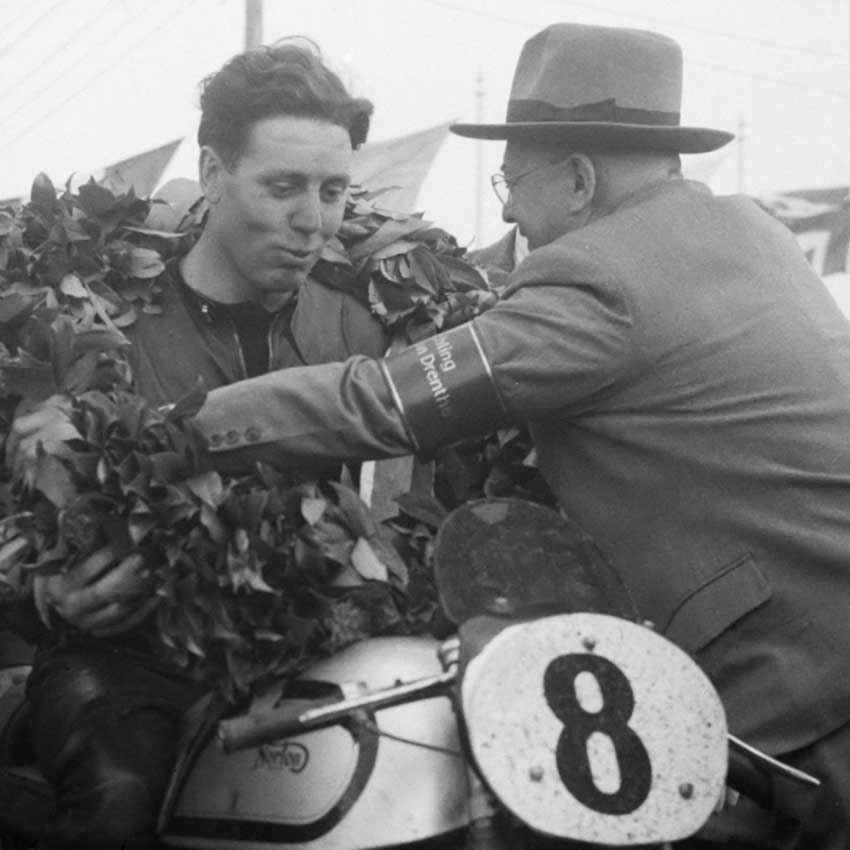
At close to 90 yrs, Geoff Duke lives on the Isle of Man. He was an exceptional motorcycle racer and a nice guy and it is claimed by some that he was instrumental in giving motorcycle racing a good name. His popular appearances drew large crowds and I have read that he drove like a stream of water from a tap - amazingly smooth. He survived many TT races and added to the prestige of the Isle of Man race.
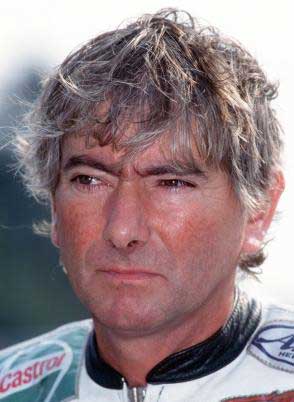
Joey Dunlop was an Irishman who won 26 events on the Isle of Man. He died in year 2000 at a race meet in Estonia where he won two large displacement classes before entering a 125cc race. In that race a mistake caused him to crash and hit a tree. Dunlop was 48 years old. His funeral, back in Ireland was covered live by the Northern Ireland TV system and 50,000 mourners attended the ceremony. Joey was a popular man.
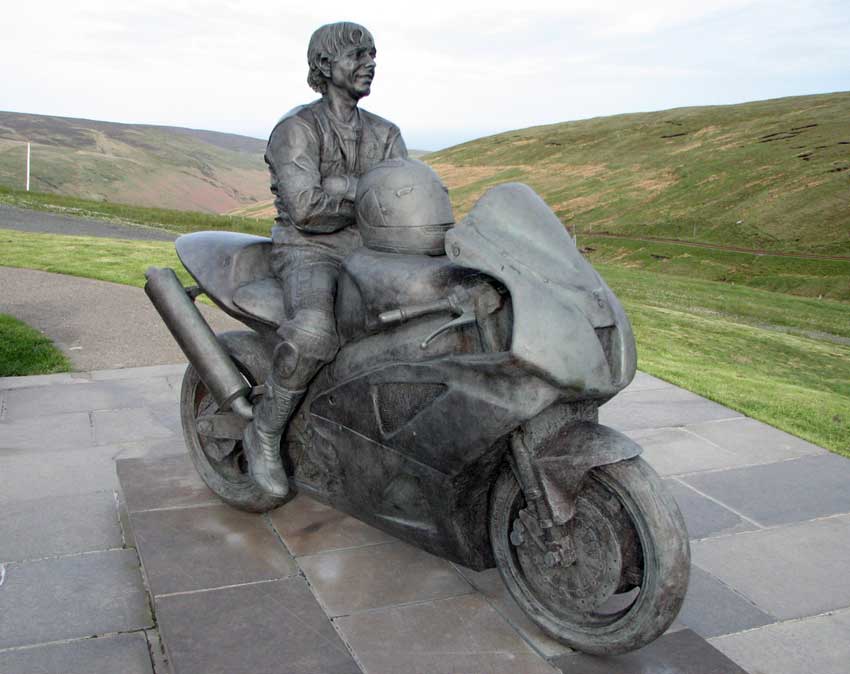
A statue of Joey Dunlop stands on the Isle of Man. He can be viewed as a type of saint of a remarkable religion where followers come each year to potentially sacrifice their lives. Is it madness? Some would feel it is. But men risk their lives in all sorts of crazy ways and the TT has lessons built into it that are worth thinking about. It is definitely a facet of Life on Planet Earth!
Have a test run via many of the videos on the web. It is a marvel that more racers aren’t killed. I am sure that surviving the TT is a rush!
I read one internet article by a man who was driving at 130 mph in a sports car on a mountain section of the TT course on one Mad Sunday. He indicated his surprise at being passed by a pack of six bikes that made his speed seem insignificant.
Should the activity be banned? Is the activity well attended? Are riders forced to go there?
The Mille Miglia, a somewhat similar race in Italy was banned a couple of times due to bloody crashes. The last ban in 1957 stuck after 10 spectators, including several children, were killed. I assume the low population of the Isle of Man and the smaller scale of the race are a factor in the survival of the TT. Also, it is a motorcycle race so you don’t have heavier cars slamming into buildings and spectators.
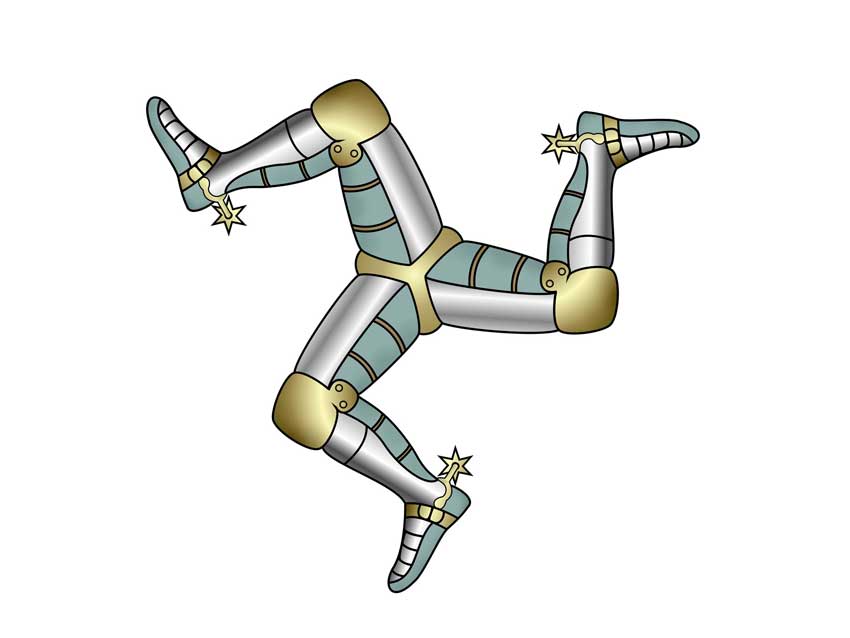
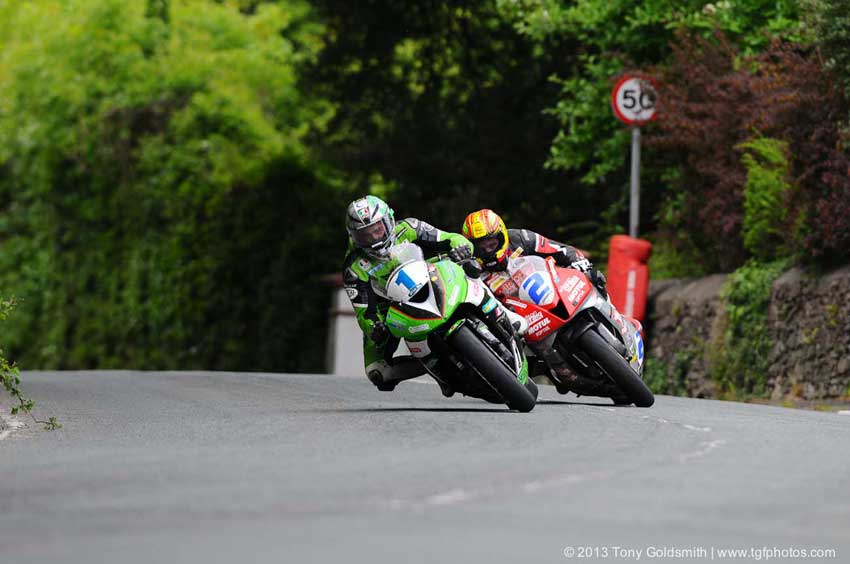
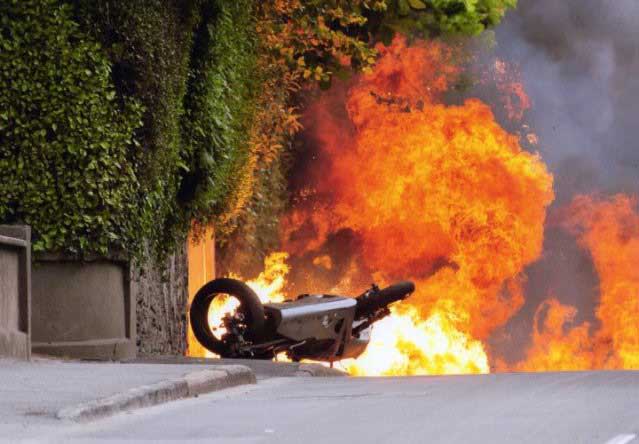
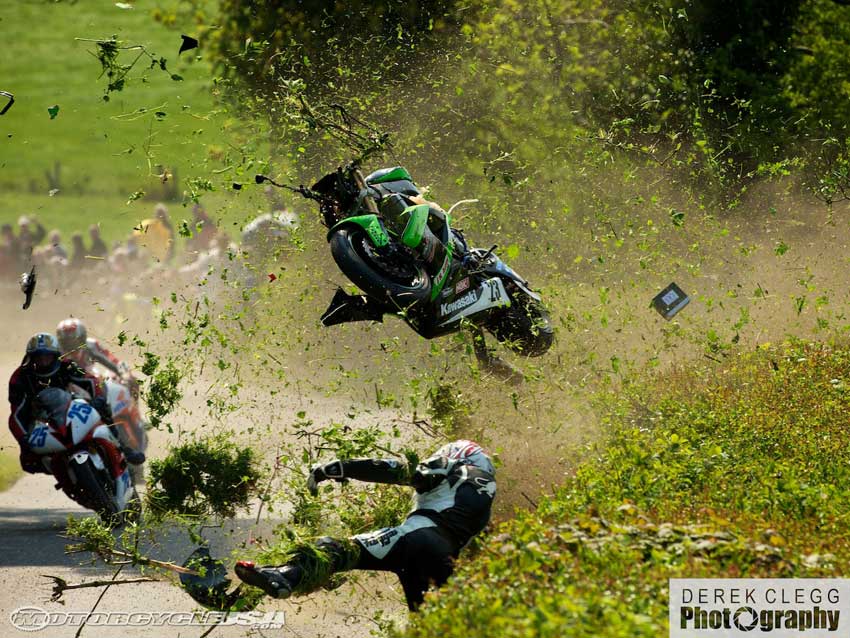
Stirling Moss expresses the view that he is glad he got to race when he did in that it was dangerous and everyone knew it. It was a rush. It was reality. Today, Formula 1 is highly regulated and since Ayrton Senna was killed in 1994, no F1 driver has been killed in an actual race. I don’t think Moss is critical of the new safety standards but he is appreciative that he got to live in a simpler and more challenging time. He of course, just barely, survived! The army of the dead doesn’t seem to be speaking up!
I have heard the view expressed that the marvel of the Isle of Man is that it is one of few places in the world where you are “free”. It is a place you can still be a 1955 Stirling Moss. There is no bureaucracy and governmental baby sitting! Mother isn’t there nagging at you! Your back is to the wall. It is all very simple. Your fate is in your own hands, right now!

Accidents are expected. One report I read told of the body of a dead racer being hung over a fence until such time as the racing ended and the body could be safely removed. Wow!
Neither the government nor Mother nor your theologian are there to nag at you. You determine your own risk level with the twist of your throttle. The only speed limits involve the laws of physics, the power of your bike, and your judgement on things like traction. You voluntarily decided to come and if you use some judgement, you will likely make a lap without mishap. Turning the start key on your bike isn't a death signal but judgement, just as with any project in life, is required. On the Isle of Man, the process is very simple and one dimensional! It is thrilling, challenging, and a ramped up analogy of Life!
Do the stars of the TT deliver a model of how more people should confront Life?
At one point the race was part of a world championship series, thus, to be able to do well in the series, you were pressured to compete at the Isle of Man. In 1972, Gilberto Parlotti crashed and died. Gilberto’s close friend and motorcycle racing great, Giacomo Agostini, refused to ever race on the Isle of Man again because of the danger level – other top racers boycotted the race as well, and the series dropped the Isle of Man in 1976. But the race still thrives without any organizational status. It has formed its own world. Riders and spectators go there because they want to go. They aren’t forced. Perhaps, though, they are “drawn” to the TT.
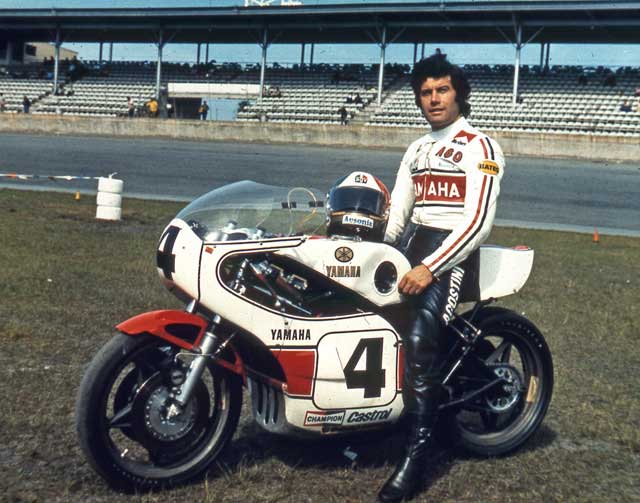
Racing great Giacomo Agostini walked away from the TT after his friend was killed. He did not feel that such a dangerous race should be a vital element in a larger racing series.
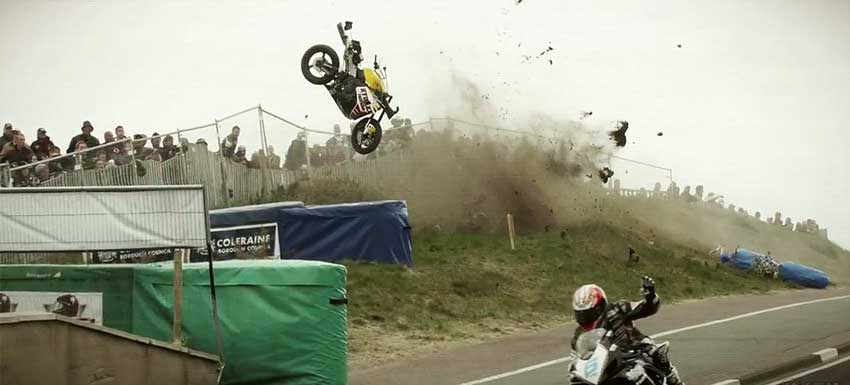
I run a paintball field and also offer laser tag. The laser tag field is wired and it is like a huge video game. When players get into it, it grabs their competitive spirit and often players will remark that “that was better than I expected!” But paintball is far more popular. One client, I feel, summed the situation up nicely. “I don’t want to do that (laser). It doesn’t hurt!”
The thing that makes paintball fly is the risk of pain. There is an adrenalin rush and an excitement that makes groups almost drunk. You hear a ball whistle past your ear and it has an effect on your mind. You know that you are living!
Outdoor laser tag is fun and challenging but the details of the activity do not stick in your memory the way that the details of a paintball outing stick. In laser you are challenged but unless there is a vital competition under way, adrenalin isn't activated as it would be if you were fearful of the sudden pain of a paintball hit.
The hero in this shot might not be making an exposed run like this if the two Gold Team players were pelting him with paintballs. Life without risk isn't the same as life with risk. There is a time for relaxation and total security but no one wants to live in a padded cell.
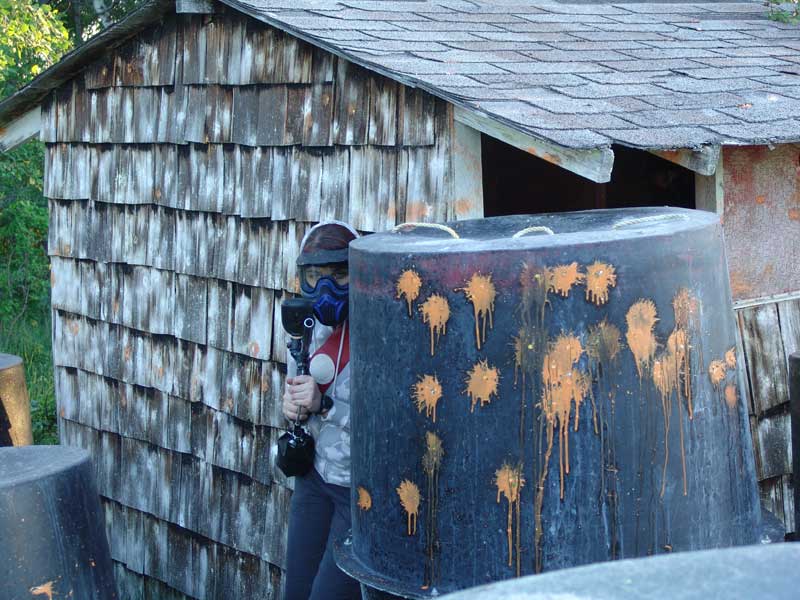
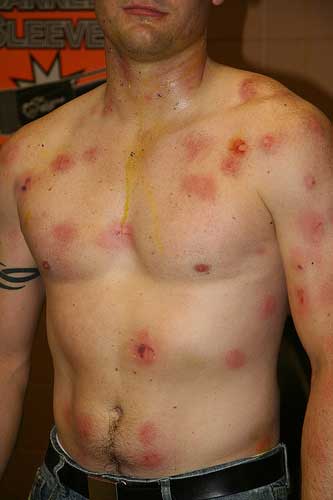
If we lived in a padded cell where injury and destruction was impossible, would be learn anything? Would we be happy? Would Life have zip and flavour? Would we ever learn to be anything more than placid robots? And at what point could we be trusted to be freed from the padded cell?
Again, at my paintball field – the games are set up such that players can determine their own level of risk. They have their hand on the throttle of their TT racing bike as well as having fingers on the brake. There are hot spots in any game and there are bordering zones of varying risk, right down to the point of almost no risk. But everyone sees the wild welts on the heroes and hears the yelps and epithets associated with painful hits – adrenalin flows for all. And brains of the players, bathed in adrenalin rich blood flow, provide sharpened senses and enhanced memory retention. Paintball outings are remembered far better than laser outings. But even if a timid player never gets hit once, the joint / group experience still creates a memorable event. Onlookers experience this effect at the Isle of Man. Everyone experiences it in Life. And we all take hits of some type and experience driving risks to some degree. We can relate to the extremes, and are impacted by the extremes, even if we try to avoid going there ourselves!


The level of freedom we have, unless other men manage to corral us or hold us down, is remarkable. And all the things we have to work with that can bring us happiness or tear us to pieces is staggering. It could be argued that we are like a kid whose dad has given him or her a Lamborghini sports car (and maybe a hot model or handsome racing driver to go with it). The car is so much fun to drive and it can thrill or kill. And who is going to give it away or lock it up and opt instead to simply go for solitary walks, unless other men force you into the situation through physical or mental chains.
I understand that many educators feel that the way we learn is by DOING things with other people. Consider the challenge, if you are a parent, of convincing a child that some course of action is totally wise and that the way the child wants to do things is totally nuts. Talk and books and just about any effort to convince often seems futile. Put yourself in your child’s position. You were there at one time. Eventually the child will be in the parent’s position. I think of it as “the both sides of the fence” educational technique. Living and doing seems to be an effective way to learn. Simply being told doesn’t DO the job. The ideal learning experience is to be free to be an idiot, then to be somewhat responsible for idiots identical to how you once were, and then perhaps being able to lapse back into the idiot mode if you become an “old fool”! We learn. We help others learn by our wisdom and by our exemplary stupidity.
This player knows that he has been paintballing! Does he regret the welts? Not likely. A gal might, but not a guy! And even the timid player who didn't get hit once is impacted by the sight of this fellow's battered body. Just the sight and thought of all those hits makes the adrenaline flow and flips the memory switch on "vivid record". Here, in effect, is a fellow who just lapped the Isle of Man course at 131 mph and lived, and his gutzy aura impacts all who come near him!
The cars are not the product of roulette wheel evolution** and neither are the models. The designers of the cars were human but the Personality that designed the models has a lot in common with the human designers. Animals don't do free form design work - only robot type productions.
The capacity and freedom that humans wallow in is remarkable. Why are we treated so well?
We can hardly gripe about being under priviledged and stiffled unless it is due to some form of human blundering or entrapment.

There are moments when restraint of others is wise and clearly a responsibility but we all need to stand on our own feet and walk our own path. Each of us requires freedom and that means, to be consistent, that we can’t enslave others.
A bit of a rider; there are many situations where one person does “control” others and it has to be that way. In team situations be it sports or business or military projects, the direction of one person is going to control the actions of others. But there is a balance. No team effort is 24 / 7 for a lifetime. And there are situations where control can be altruistic and designed to help rather than enslave. A business boss pressuring an employee to do a job in a way that has been proven to WORK might be an example. But the staffer needs to learn and become independent and the boss needs to encourage that end and allow it to happen. Moral leaders have a place too but so often that role is abused and followers become lifelong dependents rather than thinking personalities.
Jumping back to parents and kids, the solution is simple. Children become independent. Parents need to do their best. But at some point, everyone has to beat their head on the wall or stick it in the toilet and then education seems to happen! Personalities need freedom to learn. Personalities need room to learn. A padded playpen is not going to cut it in an effective educational institution. We are personalities, not robots! There is a vast gulf between the two entities.
It is a bit of a puzzle to me as to where the line is regarding responsible concern for our individual physical well being but I am really delighted that we get to call the shots. I think it is wonderful that society hasn’t set up huge padded play pens that we are forced to sit around in, any more than it has. I am glad that the Isle of Man TT race exists, even as something to watch from afar and to think about. I am glad that F1 and other sports have not been legislated out of existence. A padded playpen is not appealing. If it is, then I would claim that the contented person needs further education on being a PERSONALITY! Adventure beckons!

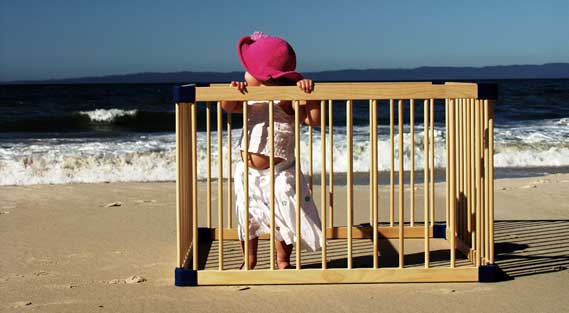
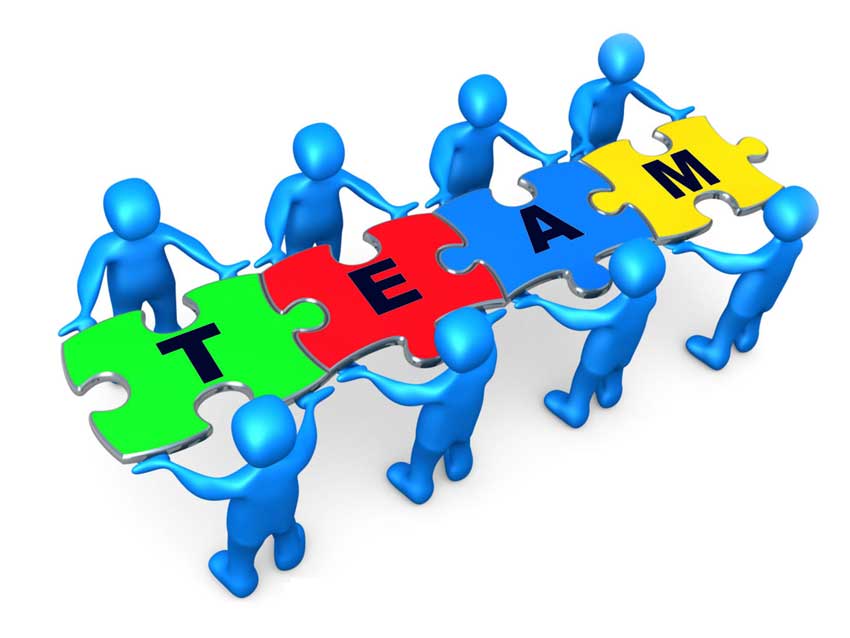

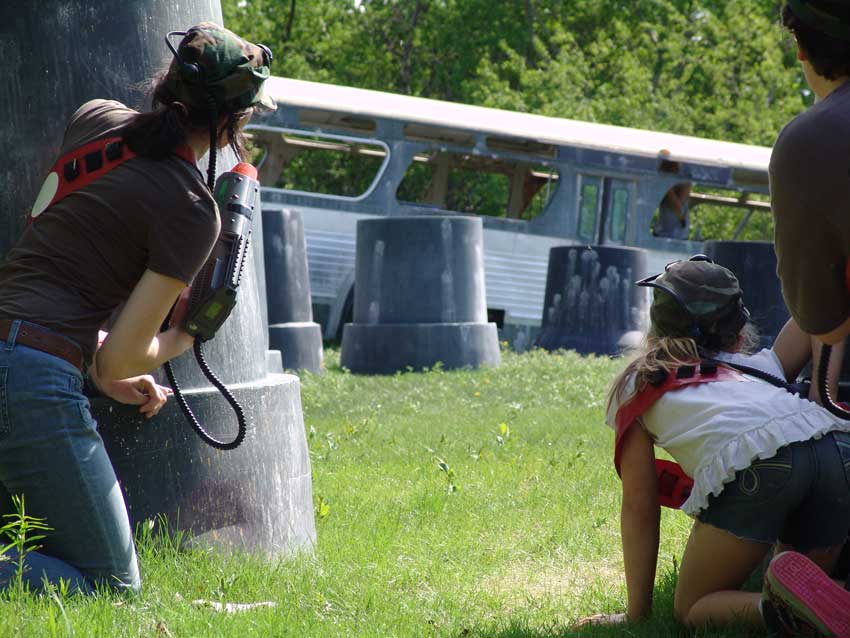
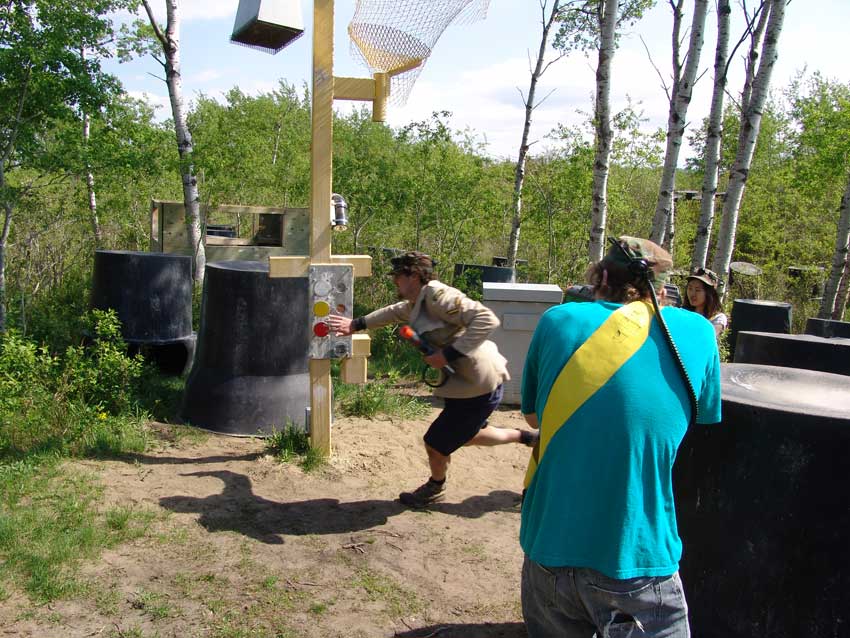
There are moments in life when we have a responsibility to control the actions of others for their own good but those moments are quite rare compared to the need to get out of the way. With these babies, how long do they need to be locked up? A better idea might be a parent watching from a distance and only acting if a problem is developing. How long is any good parent going to leave the child in the beach cage? Space and sand are for playing in and at the same time, the skill of staying clear of dangerous waves can be taught, When will the child learn that the tree oraments are off limits? Learning to handle freedom is a vital life skill!
Teams require leadership but leadership comes in many flavours and some of the flavours taste a lot better than others. Some flavours will make you healthy and some will make you sick and some will actually kill you. Humans are creative personalities and not puppets or robots. At some point, everyone has to think for themselves and stand on their own feet and apply their own mental values. We need to know how to cooperate but we are not meant to be possessed by a cult leader or any other mind.